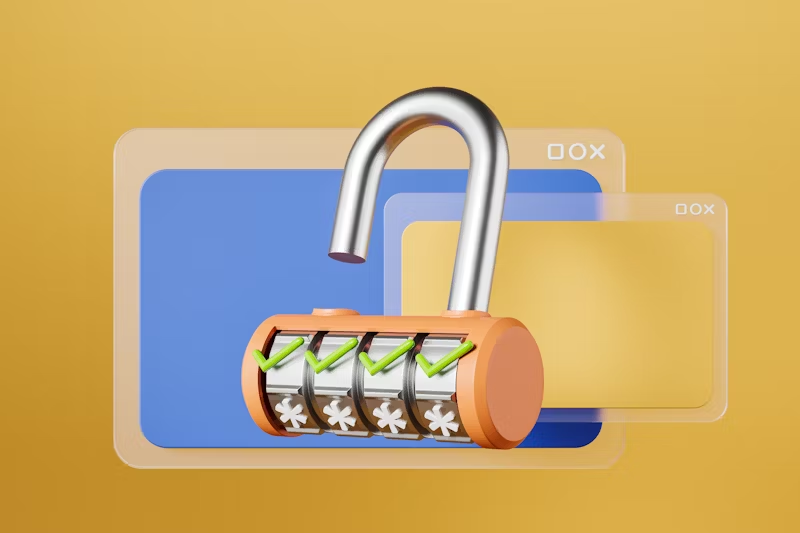In an era where privacy is a major concern, end-to-end encryption (E2EE) has become the gold standard for secure communication. Apps like Signal, WhatsApp, and Telegram leverage advanced cryptographic protocols to ensure messages remain private between the sender and the recipient.
One of the most widely used encryption frameworks is the Signal Protocol, which powers the security of WhatsApp, Signal, and Facebook Messenger. But how does it work under the hood? This in-depth article will break down the cryptographic principles, key exchange mechanisms, and mathematical computations that make Signal Protocol a formidable privacy shield.
What Is End-to-End Encryption (E2EE)?
End-To-End encryption ensures that only the sender and receiver can read a message. Even the service provider (such as WhatsApp or Signal) cannot decrypt messages.
How Is This Achieved?
E2EE relies on asymmetric cryptography, where a pair of keys (public and private) is used for encryption and decryption:
- The public key is shared with everyone.
- The private key is kept secret by the user.
Key Properties of E2EE
- Forward secrecy: Ensures past messages cannot be decrypted even if long-term keys are compromised.
- Post-compromise security: Limits the damage in case of a key leak.
- Authentication: Prevents man-in-the-middle attacks (MITM).
- Integrity: Ensures that messages have not been tampered with during transmission.
- Confidentiality: Guarantees that only the intended recipient can read the message.
- Deniability: Messages cannot be cryptographically proven to third parties, which is a crucial privacy feature in secure communications.
Signal Protocol: The Backbone of Secure Messaging
Signal Protocol builds upon the principles of the Diffie-Hellman Key Exchange, Elliptic Curve Cryptography (ECC), and the Double Ratchet Algorithm.
1. Key Exchange: X3DH (Extended Triple Diffie-Hellman)
The X3DH protocol is used for initial key exchange, ensuring that two users can securely establish a shared secret over an untrusted network.
Step 1: Key Generation
Each user generates the following keys:
- Identity Key (IK): A long-term key pair
(IK_private, IK_public). - Signed Prekey (SPK): A semi-long-term key pair
(SPK_private, SPK_public), signed usingIK_private. - One-Time Prekeys (OTPKs): Short-lived key pairs
(OTPK_private, OTPK_public).
Step 2: Shared Secret Calculation
When Alice wants to send a message to Bob, she retrieves Bob’s public keys from the server and computes a shared secret using Diffie-Hellman (DH) exchanges:
SS1 = DH(IK_A, SPK_B)
SS2 = DH(EK_A, IK_B)
SS3 = DH(EK_A, SPK_B)
SS4 = DH(EK_A, OTPK_B)
Final Shared Secret = KDF(SS1 || SS2 || SS3 || SS4)Where:
EK_Ais Alice’s ephemeral key pair.KDFis a Key Derivation Function (e.g., HKDF-SHA256) used to derive multiple session keys.
This ensures that even if some keys are compromised, past messages remain secure (Forward Secrecy).
2. Message Encryption: The Double Ratchet Algorithm
Once a shared session key is established, messages are encrypted using the Double Ratchet Algorithm, which provides both forward secrecy and post-compromise security.
How It Works
Each message is encrypted using a unique message key derived from a continuously evolving chain of keys:
- Diffie-Hellman Ratchet: Generates a new shared secret key when either party sends a new message.
- Symmetric Key Ratchet: Uses a Key Derivation Function (KDF) to generate a new message key after each message.
- Chain Key Update: Ensures each message key is unique and unpredictable.
Mathematical Formulation
If CK_n is the current chain key and KDF is a cryptographic hash function (e.g., HMAC-SHA256), then the next keys are:
MK_n = KDF(CK_n)
CK_n+1 = KDF(MK_n)Where:
MK_nis the message key used for encryption.CK_n+1is the updated chain key.
By frequently updating keys, even if an attacker gains access to a single message key, they cannot decrypt past or future messages.
End-to-End Encryption in Action: An Example
Let’s walk through an encrypted conversation between Alice and Bob:
- Alice fetches Bob’s prekeys from the Signal server.
- Alice derives a shared secret using the X3DH key agreement protocol.
- Alice sends an encrypted message to Bob, using the Double Ratchet algorithm.
- Bob responds, initiating a new Diffie-Hellman ratchet step.
- Each subsequent message uses a new key, ensuring strong security.
Security Guarantees of Signal Protocol
The Signal Protocol provides:
- Forward Secrecy: Even if a device is compromised, past messages remain protected.
- Post-Compromise Security: If a key is exposed, it does not compromise future messages.
- Deniability: Messages are authenticated but cannot be cryptographically proven to third parties.
- Integrity Verification: Ensures messages are not altered during transit.
- Resilience to MITM Attacks: Authentication mechanisms prevent tampering.
- Self-Healing: If a key is leaked, the next DH ratchet repairs security.
- No Metadata Leaks: Prekeys avoid revealing who is communicating.
Conclusion
The Signal Protocol is the gold standard for private messaging, balancing strong encryption, forward secrecy, and efficiency. The Signal Protocol’s blend of X3DH, Double Ratchet, and elliptic curve cryptography creates a robust system for private communication. By continuously evolving keys and leveraging unbreakable math, apps like Signal and WhatsApp ensure your messages stay secure—even against quantum computers or state-level attackers.
As online surveillance and cyber threats continue to grow, adopting E2EE is essential for preserving digital privacy. Whether you’re using WhatsApp, Signal, or another encrypted platform, you can trust that your messages remain secure, thanks to cutting-edge cryptographic engineering.



